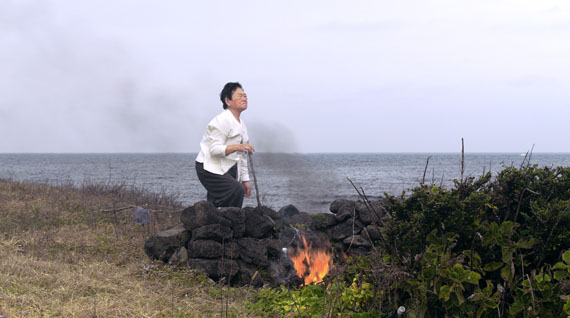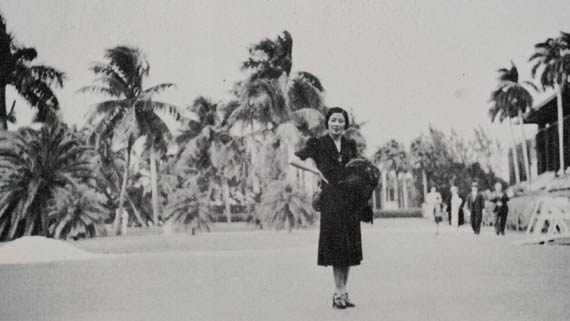
History Has Failed Us, but No Matter
siren eun young jung
Jane Jin Kaisen » Hwayeon Nam »
Exhibition: 11 May – 24 Nov 2019
Thu 9 May 13:30

Who canonized the formation of history and whose bodies are yet to be written about as part of that story? What changes would emerge, if we revisited the solid strata demarking East Asia and its myths, and what would we discover if we approached these sites of modernization and nationalistic history through the lens of gender diversity? It is these vital questions that frame the exhibition History Has Failed Us, but No Matter organized for the Korean Pavilion at the 58th Venice Biennale, showcasing the work of three women artists: siren eun young jung, Jane Jin Kaisen, and Hwayeon Nam. Each artist approaches these questions through a rubric of research, developing their practices using critical reflection based on a strong gender consciousness as they delve into both the present and parse the history surrounding the modernization of Korea and East Asia. The title of the exhibition is borrowed from the first sentence of novel PACHINKO (by Min Jin Lee, 2017), a fascinating storytelling of Zainichi Korean diaspora and dynamic portrayal of women positioned as the subaltern in the turmoil of the 20thcentury.
For the last ten years, siren eun young jung has worked on her research-based production on yeoseong gukgeuk, a fast waning genre of Korean traditional theatre that features only women actors. Documenting the performance of second generation gukgeuk actor Lee Deung Woo (aka Lee Ok Chun), jung’s A Performing by Flash, Afterimage, Velocity and Noise also calls forth four performers that succeed the genealogy of contemporary queer performance—a transgender musician, a disabled woman performer/director, an openly lesbian actor, and a dragking performer. Engaging in these performers’ contestation against aesthetic canons, the artist lures the audience into an audiovisual setting activated by the feast of light, noise, and the moving body.
Stemming from the artist’s own diasporic experience and awareness, Jane Jin Kaisen’s new film Community of Parting keenly interprets the ancient Korean myth of Bari, in which a daughter character sacrifices herself for her parents and ultimately becomes a god mediating between life and death. For the artist, the epic story resonates with the contemporary battle against gender discrimination as well as narratives of women diaspora caused by war, nationalism, ideological conflicts, rapid modernization with patriarchic oppression in East Asia. Juxtaposing various sounds with the redemptive performances of a shaman, the artist explores the embodiment of liminality as she sharply dives into the portrait of sacrificial women and images of borders throughout the history of the Korean peninsula.
Hwayeon Nam’s experimentation with archives investigates how human desire can amplify certain myths and values in today’s discursive operations of nation and economy. In her new video Dancer from the Peninsula, Nam traces the fragmented archive of Choi Seung-hee, a legendary but controversial choreographer and modern dancer whose life intersected many of the most tumultuous events of the 20th century in East Asia. Nam’s manifold presentation includes single-channel videos that utilize found footage and images from Choi’s archives, as well as a large sculptural structure, and a small garden installed behind the Pavilion. This layered multi-media installation offers an enchanting and performative bricolage of a controversial woman artist figure’s life and her lofty aspiration toward an East-Asian dance, rescuing her from the simplified nationalistic or ideological arguments against her.
The various narratives presented by these three artists weave formally complex compositions of mesmerizing sound, color, lights, rhythm and organically curve-shaped architectural installations, alongside alluring movements of the plural body to vigorously explore the heterogeneous narratives of the history of East Asian modernization. The exhibition thus presents the veiled, the forgotten, the abandoned, the condemned, and the oppressed, bringing these voices into the spotlight.�